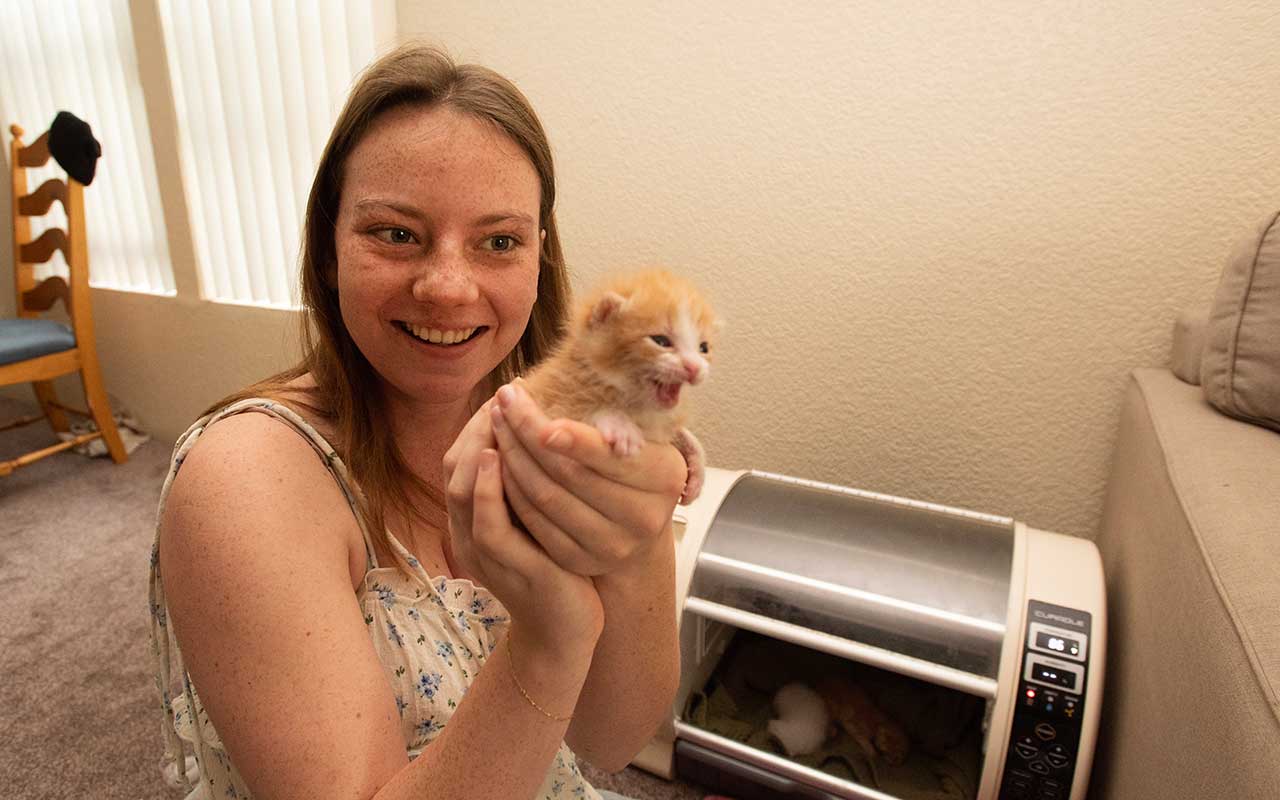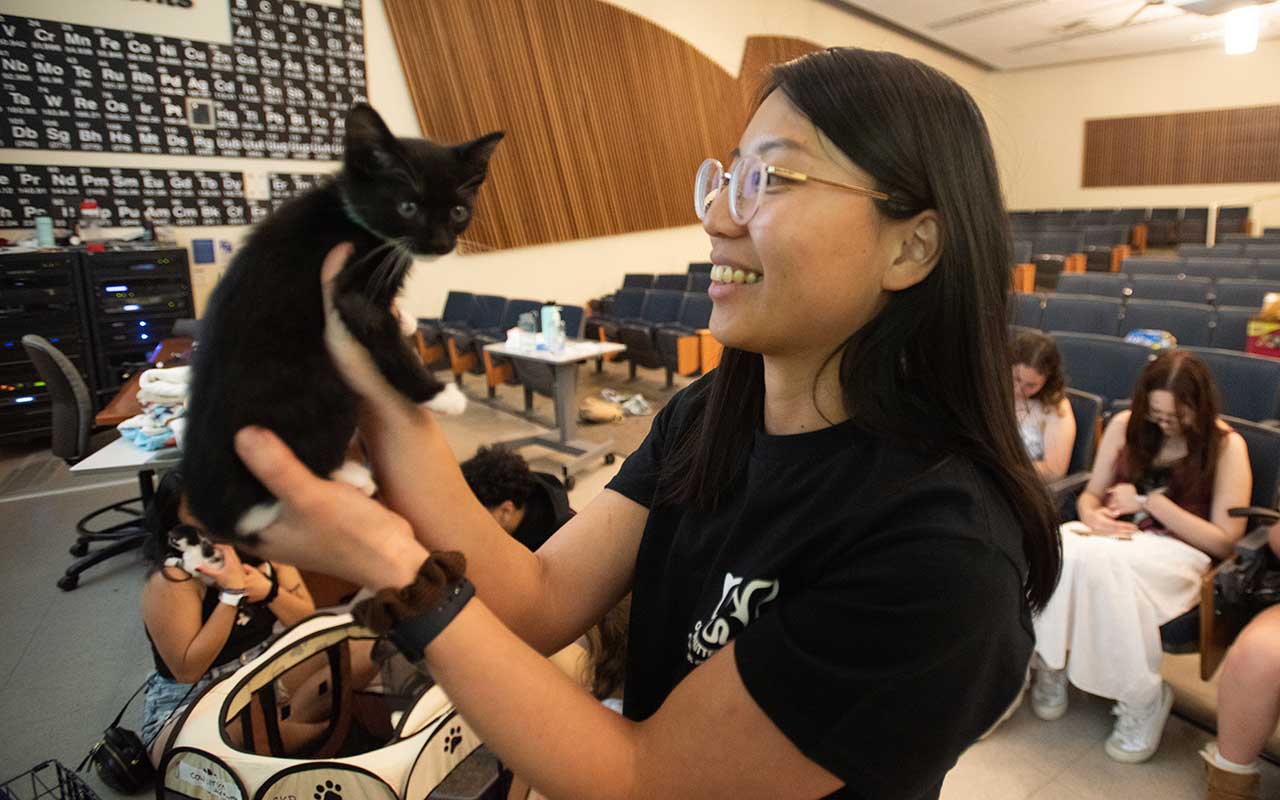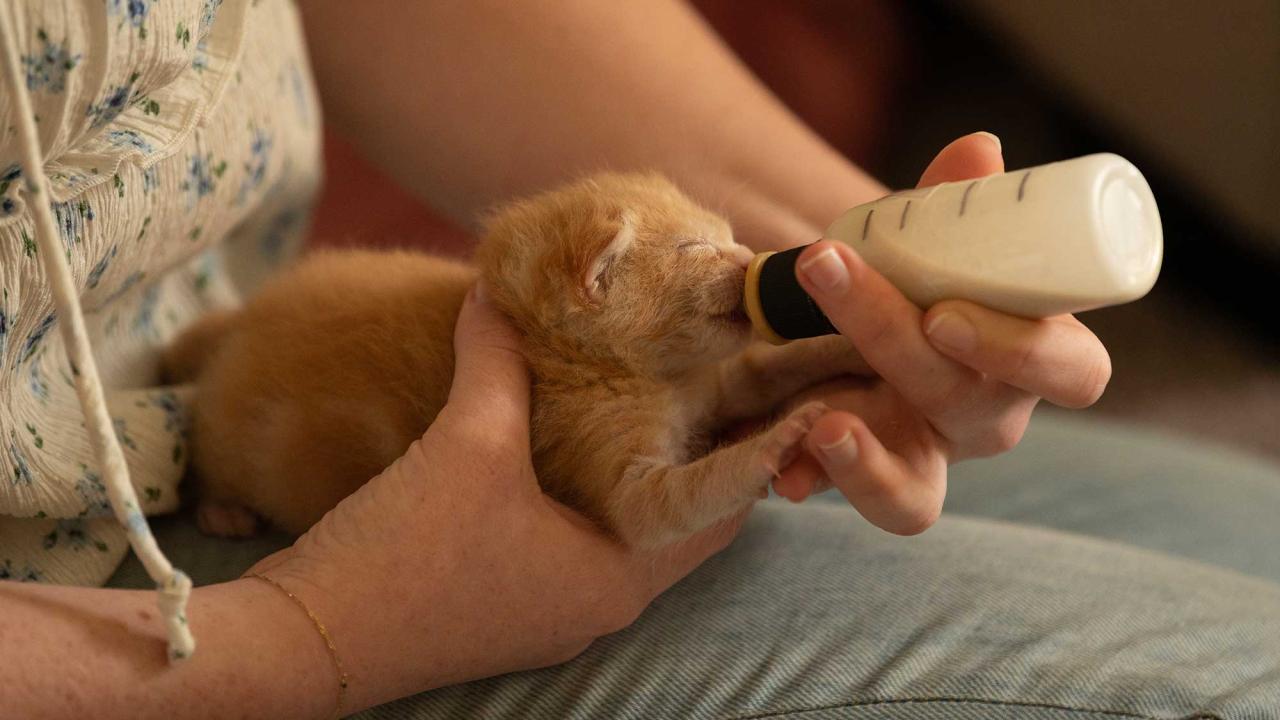Kaya Miller, a second-year UC Davis undergraduate, introduces her three 3-week-old foster kittens: Anna, Elsa and Merida. She explains that as a busy student, she and her roommate have taken on alternating shifts feeding and cleaning the kittens. “It’s a lot of dedication; we have to wake up every two hours, but it's so worth it,” she said.
Miller is a volunteer foster within the Orphan Kitten Project, or OKP, a nonprofit, vet-student-run club that has rescued and rehabilitated neonatal kittens since 1988.
Neonatal kittens, under 4 weeks of age, require specialized care, like bottle feeding and medical treatment. Fosters can help ease the burden on traditional animal shelters, and give the attention needed.

Every year, many neonatal kittens are left without mothers, facing risks of malnutrition, illness, and death. According to UC Integrated Pest Management Program, feral and free-roaming cats represent between 18% and 49% of all cats in the United States. These populations are particularly high in warmer climates like California; in Los Angeles County alone, the feral cat population is estimated to be around half a million.
Yolo County residents and shelters notify OKP when they receive neonatal kittens. “They'll call us, and if we can take them, we will. Or we'll help direct them to other resources,” said Hannah Rogers, a student at the UC Davis Veterinary School of Medicine and co-president of OKP.
As one of the largest organizations on campus, the club is supported by an extensive network of volunteers, from surgery and adoption coordinators to veterinary advisors at the on-campus William R. Pritchard Veterinary Medical Teaching Hospital.
“It takes a village because we're running an entire rescue,” Rogers said. “The whole thing is really everybody in the community.”
The foster system is a crucial component of the club. OKP lacks a physical location and relies on volunteer fosters, who are usually undergraduates or local Yolo County residents. Vet students will pair kittens with foster families, provide them with supplies and medication, and guide the fosters through the care process. The club has about 20 to 30 active fosters at any given time.
This isn’t Miller’s first time fostering. In her childhood, she took care of an injured cat named Mildred. “We would syringe feed him and it was a little stressful, but it was so good to just be there for him and get to raise him,” she said. Mildred eventually got adopted and found a loving home.
Miller heard about OKP through a friend and signed up to join an email list for prospective fosters. After responding to an email about fostering the kittens, she was connected to a volunteer coordinator, who provided her with an incubator, litter, formula and other supplies.
“The coordinator came over and showed me how to do everything. There are just really amazing people in the program,” she said.
In addition to involving community members in animal care, the program provides valuable experience for veterinary students.
"Even after we graduate and become veterinarians, we will see kittens in our line of work — they will pop up in the clinic, so it’s good to know how to deal with them," said Charissa Tseng, a first-year student at the UC Davis School of Veterinary Medicine.
Tseng is a co-vice president of OKP and joined the program after realizing her passion for kitten care. “I personally love cats and wanted to learn how to take care of very young kittens,” she said. “The best part is seeing the kittens go from fragile and sickly to strong and healthy.”

Tseng checks in with volunteer fosters, administers vaccines and organizes the adoption schedule. “I recently had my first adoption, and it was so fulfilling to see the kitten find a loving home,” she said.
OKP charges an adoption fee, but the funds go completely into medical costs. “It really doesn't produce any money. [The fees] just help us break even on vaccines and neutering,” Rogers said. OKP depends largely on a network of donors, like the Orphan Kitten Club and Sacramento Valley Veterinarian Associate Medical Association, to provide money, supplies and food.
While the project partners with veterinary hospitals, medical bills still pose a substantial challenge. “We work hard to apply for grants and raise funds,” Tseng said.
OKP’s work is expected to increase with the rising feral cat populations in warm seasons. “By high summer, we just run out of space. Our biggest limiting factor is money because we always have to keep a certain amount for medical emergencies,” Rogers said.
For the future, OKP is focusing on trap, neuter and release, or TNR. “Unless you can spay and neuter mom and dad, you're always going to have more homeless kittens getting hurt from living outside,” said Rogers. “When you stop that cycle, you won’t have more kittens taking their place.”
“If you have the time and ability, definitely foster. Every bit makes a difference for these kittens,” Tseng said.
In the meantime, Miller will take care of Anna, Merida and Elsa until they are adopted. “The only reason why I wouldn't adopt them is because I don't have the security. Otherwise, I think I'd have 10 million cats,” she said.
